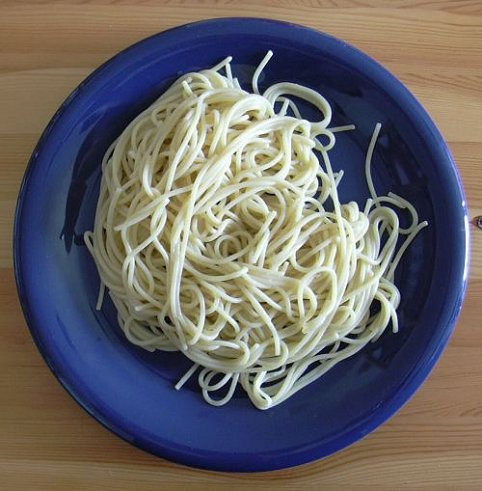
The History of Pasta. Spaghetti Sauce Recipes and More
In the history of pasta it is impossible to decide just who brought this delight to the rest of the world.
Marco Polo is given some credit as he brought with him from his travels in China, somewhere between 1269 and 1293, a large chest of dried pasta to his heirs after his death in 1324.
So he cannot be given credit for introducing it to Italy. That detail is lost in the folds of history.
There is reason to believe that the Arabs may have been the first to make pasta as they carried it on their caravans in the middle east.
Carvings of what appears to be pasta-making tools give reason to believe Etruscans were making pasta in pre-Roman times.
There is also signs that the ancient Greeks made pasta from flour and water. So the history of pasta goes deep.
But How is it cooked?
Whether fresh or dried, pasta should always be cooked in lots of salted boiling water. Remove it from the pot when it is still a bit firm to the bite.
It will continue to cook from it's own heat, and should arrive at the table al dente, just a bit firm, with no crunch to the bite.
Drain the pasta quickly and thoroughly in a colander. Any clinging water will dilute the sauce.
It is not necessary to rinse, but if you really must, don't use cold water. The idea is to keep the pasta hot. Return it to the hot pot, add grated cheese and toss.
Adding the cheese now blends the flavor through, rather than having it sit on top of the sauce.
Now add the sauce, toss and cook gently for 2 to 3 minutes to imbue the pasta, with the flavor of the sauce, and serve immediately on pre-warmed plates.
Now for a couple of tips
 |
The only rule you need to heed is never break the spaghetti into pieces prior to cooking it.
The best advice is from the late James Beard: "If you slurp them, so be it. Because the truly best way, the only classical and true way, to eat pasta is with gusto."
In the history of pasta the homemade spaghetti sauce recipe is often better than the products from the spaghetti factory. Among my favorite spaghetti recipes are baked spaghetti and spaghetti carbonara.
No history of pasta would be complete without a spaghetti and meatballs recipe or an Italian spaghetti sauce.
Spaghetti is made of semolina or simply flour and water. The Italian spaghetti is made from durum wheat semolina, but in the rest of the world it can be made from many other types of flour.
Many pasta dishes are made from spaghetti, from spaghetti with cheese and pepper or garlic and oil and spaghetti with meat, tomato, mushrooms and other sauces.
In the history of pasta we know it was used in the 12th. Century in Southern Italy. Once it became popular it spread to the whole of Italy when pasta factories in the 19th century were able to produce spaghetti for the entire country.
In the USA in the 1890s spaghetti was offered in the restaurant trade as Spaghetti Italienne, which was not very appetizing and it wasn't until 1920 or so that they began preparing it with garlic or peppers.
Finally canned spaghetti and spaghetti with meatballs grew in popularity and the dish has become a staple of the American diet ever since.
Serving
The staple of Italian cuisine, spaghetti is most often served with a wide variation of tomato sauces which may contain herbs such as oregano and basil, vegetables, olive oil and meat of different types such as chicken, beef and pork. The history of pasta encompasses an amazing variety of pasta recipes.
Enjoy this great recipe for Bow-tied escargots in pasta
Other spaghetti recipes include Bolognese sauce, Alfredo, grated cheese such as Parmesan, Pecorino Romano and Asiago.
Return From History of Pasta to Home



